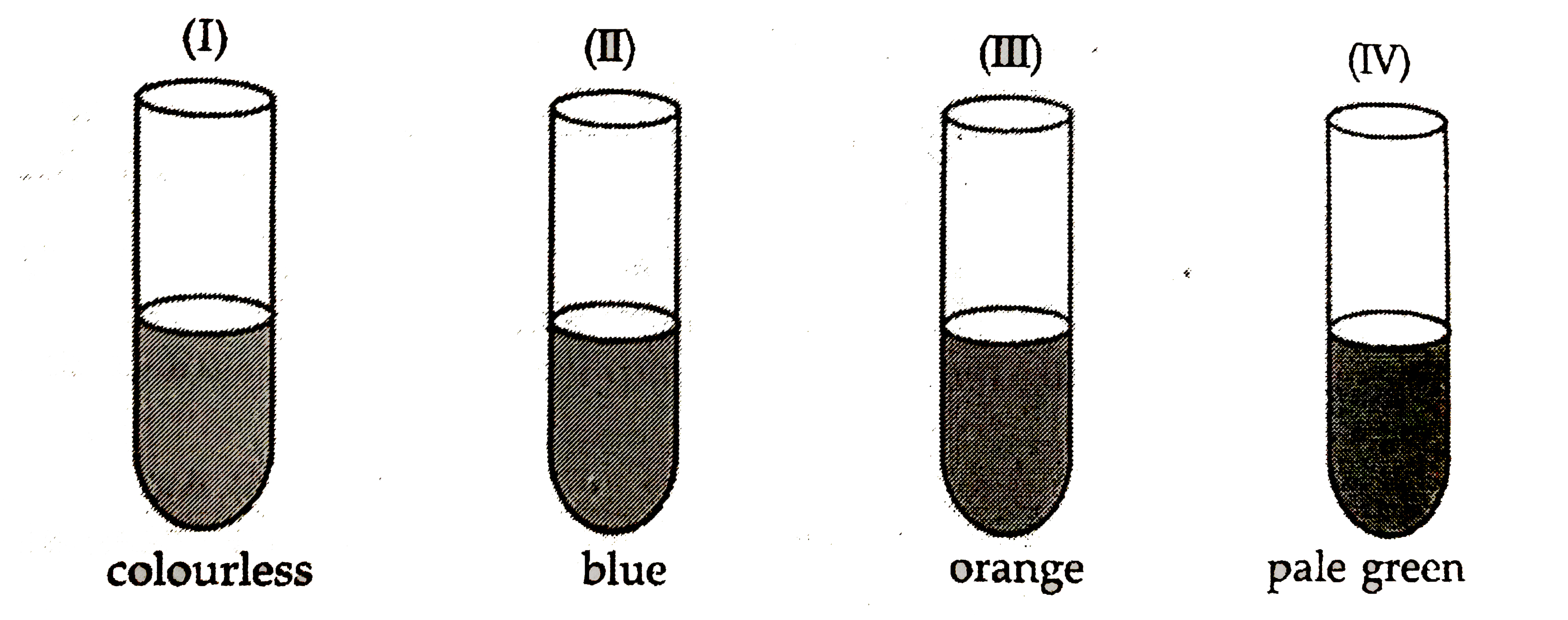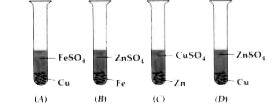Four different test tubes were filled with aluminium sulphate solution. Different metals were introduced into these test tubes in following manner.

What can be inferred ?
It can be inferred that Al is more reactive than Zn, Fe and Cu. This is because when Zn, Fe, Cu are introduced in aluminium sulphate, no change is observed as none of the metals displaced aluminium from its solution.
Topper's Solved these Questions
- BOOK - VK GLOBAL PUBLICATIONCHAPTER - PRACTICAL BASED QUESTIONSEXERCISE - Experiment 46videos
PRACTICAL BASED QUESTIONS
- BOOK - VK GLOBAL PUBLICATIONCHAPTER - PRACTICAL BASED QUESTIONSEXERCISE - Experiment 59videos
PRACTICAL BASED QUESTIONS
- BOOK - VK GLOBAL PUBLICATIONCHAPTER - PRACTICAL BASED QUESTIONSEXERCISE - Experiment 25videos
PRACTICAL BASED QUESTIONS
- BOOK - VK GLOBAL PUBLICATIONCHAPTER - MANAGEMENT OF NATURAL RESOURCESEXERCISE - HOTS (Higher Order Thinking Skills)7videos
MANAGEMENT OF NATURAL RESOURCES
- BOOK - VK GLOBAL PUBLICATIONCHAPTER - SOURCES OF ENERGY EXERCISE - SHORT ANSWER QUESTIONS - II16videos
SOURCES OF ENERGY
Similar Questions
In a science fair , a student took two test tubes labelled A and B filled with copper sulphate solution, then he put magnesium ribbon in test tube A silver foil in tube B. Predict the observation and justify.
View SolutionIn a science fair , a student took two test tubes labelled A and B filled with copper sulphate solution, then he put magnesium ribbon in test tube A silver foil in tube B. Predict the observation and justify.
View Solution
Knowledge Check
- Question 1 - Select One
A student was studying reactions of metals with dilute NaOH at room temperature. The student took dilute NaOH in four different test tubes and added copper powder to test tube A, zinc dust to test tube B, aluminium powder to test tube C and iron powder to test tube D and observed effervesce in ________.
ATest tubes A & BBTest tubes B & CCTest tubes C & DDTest tubes A & D - Question 2 - Select One
A student took four test tubes containing solutions of different colours marked I,II, III and IV as shown here. The test tubes containing copper sulphate solution and ferrous sulphate could be the tubes:
 AI and IIIBII and IIICIII and IVDII and IV
AI and IIIBII and IIICIII and IVDII and IV
In the following four test tubes, some metals are in contact with certain salt solutions. After the experiment, in which of the test tubes does the solution becomes colourless and a powdery red mass is deposited at the bottom of the test tube ?
 View Solution
View SolutionFour students A,B,C and D were given funnels filter paper test tubes ,test tube stands common salt, chalk powder starch and glucose powder they prepared the true solution suspension and collloidal solution .Test tubes were arranged as shown in the figure. observe the filtrate obtained in the test tubes and residue on filter paper . conclude about filtrate residue and type of solution.
View SolutionA student had taken solutions of KI, H2S,C2H5OH and NaBr in four separate test tube but he forgot to label them. By taking a mall sample of the solution from each of the four test tubes, suggest a method by which he can find out the solution in each test tube by using the same reagent in each of the test tubes. Give the reaction in each case.
View SolutionIn a chemistry lab, Rina took some mercury and water in two test tubes separately. Then she drained off both the liquids and on observing the emty test tubes, found some difference. Can you guess what the difference is ? Explain with appropriate reasons.
View SolutionThree test tubes marked A, B and C are taken. In test tube A copper sulphate solution and iron are added. In test tube B, copper sulphate solution and zinc are added. In test tube C, iron sulphate solution and copper are added. In which test tube will the experimenter observe change and why?
View SolutionA student addd few pieces of aluminium metal to two test tubes A and B containing aqueous solutions of iron sulphate and copper sulphate. In the second part of her experiment, the added iron metal to another test tubes C and D containing aqueous solutions of aluminium sulphate and copper sulphate.
In which test tube or test tubes will she observe colour change? On the basis of this experiment, state which one is the most reactive metal and why ?View Solution

